 |
||||||||||||||
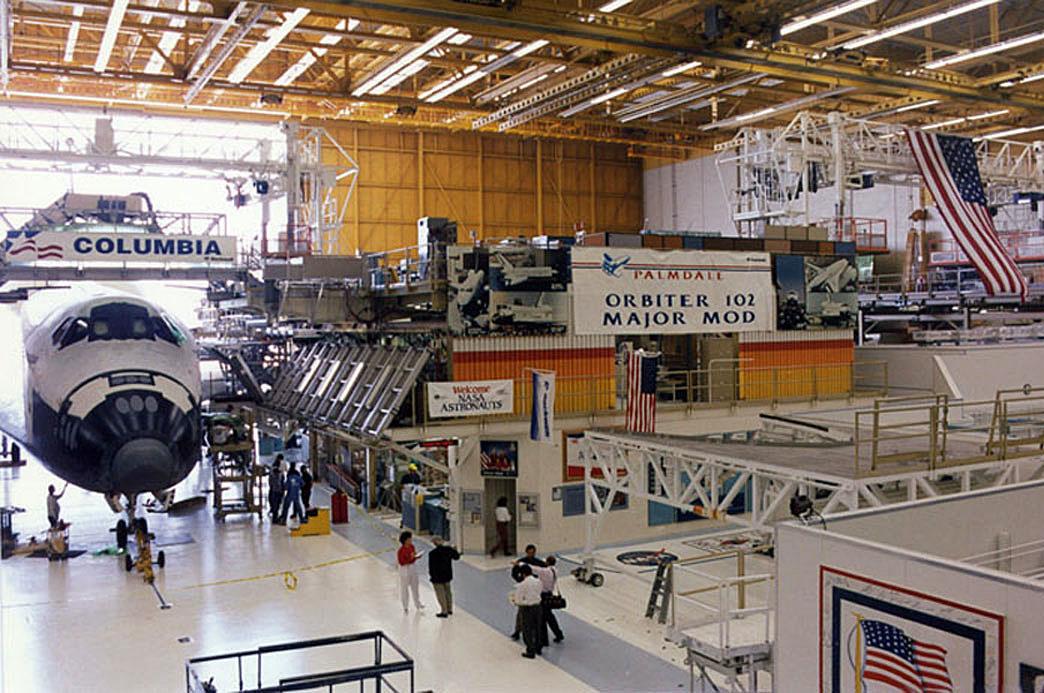 |
||
 |
||||||||
Orbiter Statistics: Columbia (OV-102) Rollout: 8 Mar. 1979 First Flight: 12 Apr. 1981 (STS-1) Final Flight: 1 Jan. 2003 (STS-107) Named for U.S. Navy frigate, USS Columbia, that in 1836 was one of the first American naval vessels to sail around the world. Also named for the civilian sailing vessel that explored the mouth of the Columbia River in 1792. Columbia and her crew of seven astronauts were lost on 1 Feb. 2003. |
||||||||
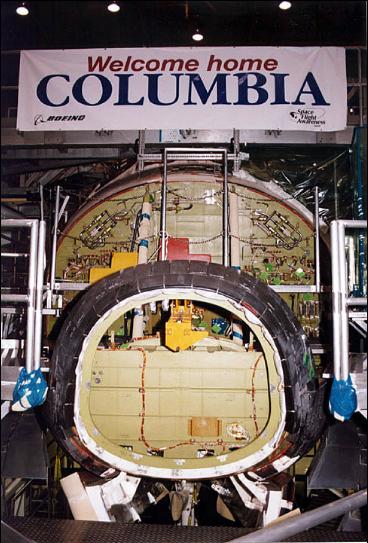 |
||||||||
These photographs of Columbia were taken while it was in a major modification period to install the new glass cockpit. This is inside the construction hangar where all six orbiters were first brought to life in Palmdale, California. |
||||||||
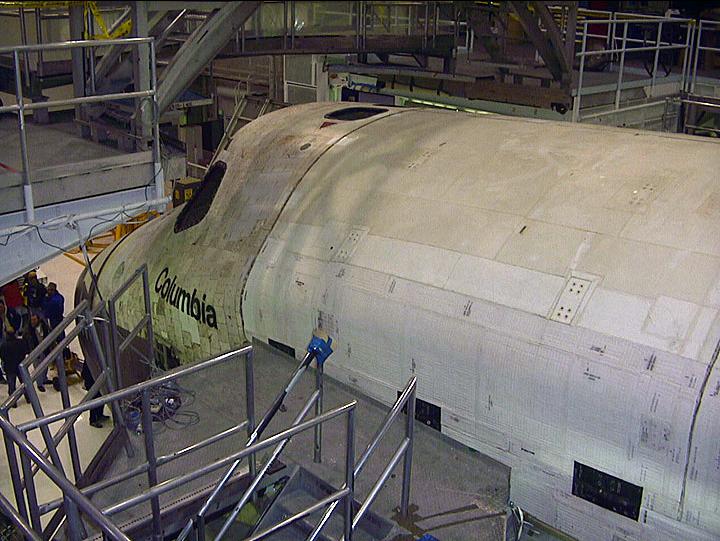 |
||||||||
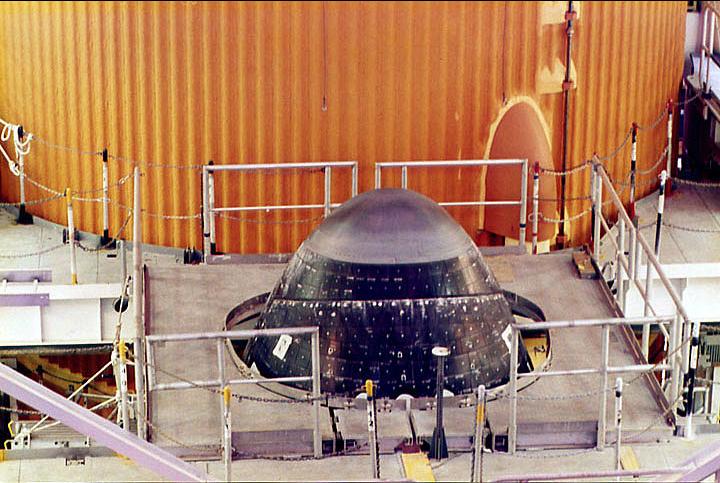 |
||||
This series of photographs was taken in June 1995 inside the Vehicle Assembly Building. The orbiter Endeavour was mated to the External Tank and two Solid Rocket Boosters. The entire Space Shuttle stack was ready for rollout to the launch pad approximately ten hours after these photos were taken. |
||||
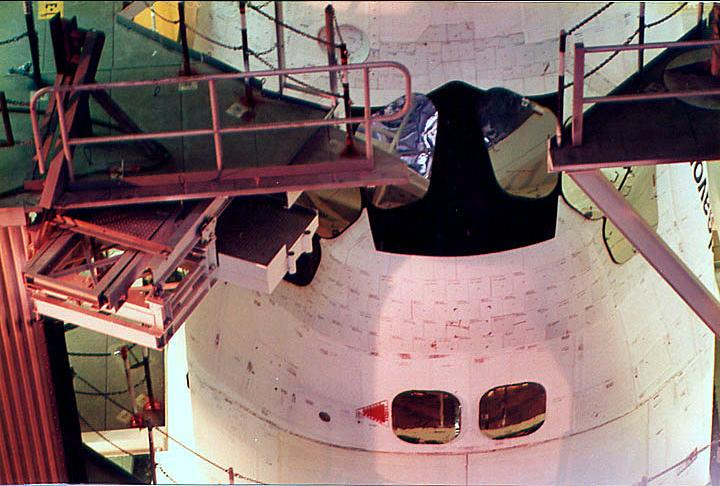 |
||
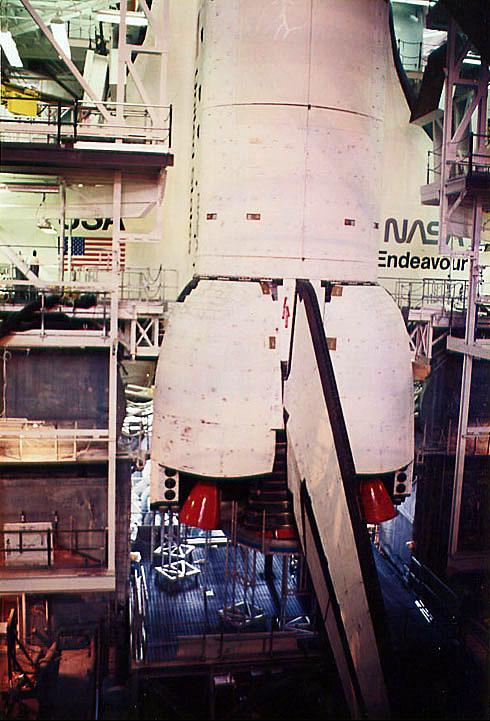 |
||||||
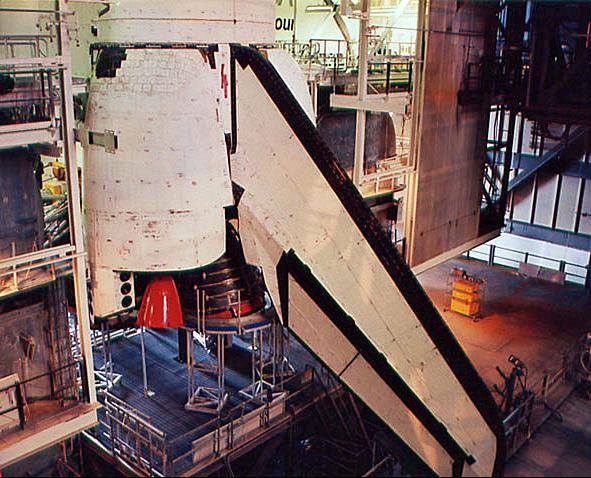 |
||||||
 |
||||||
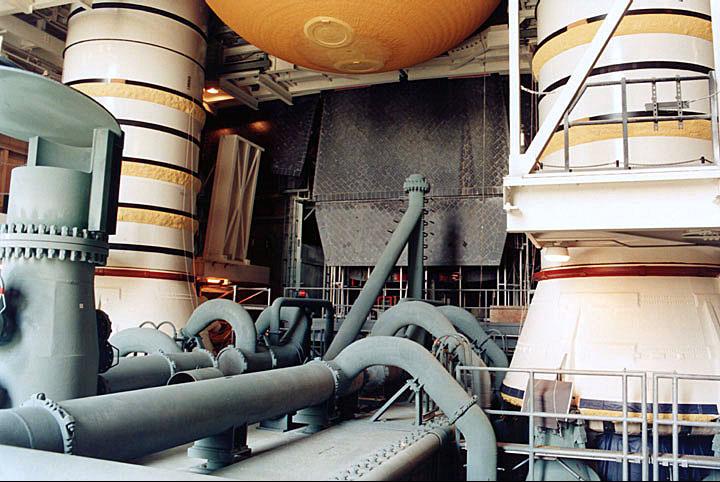 |
||||||
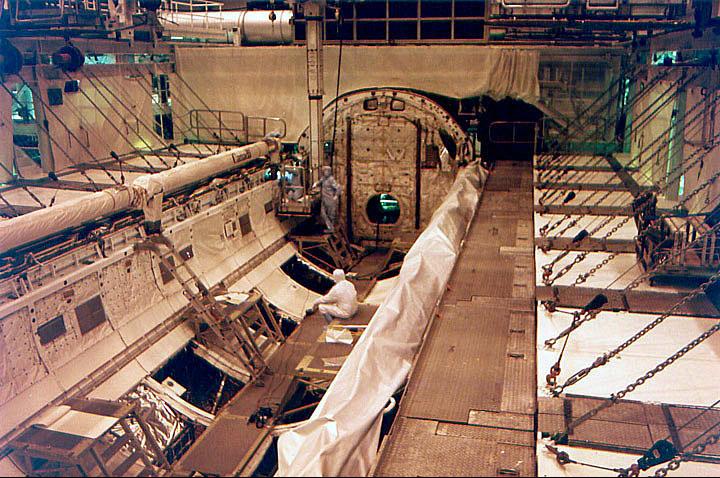 |
||||
The orbiter Atlantis was located in the Orbiter Processing Facility (OPF) in January 1991 , when these photos were taken. Preparations were being made for the flight of mission STS-37 on 5 Apr. 1991.
Workers can be seen in the cargo bay to give a sense of scale . |
||||
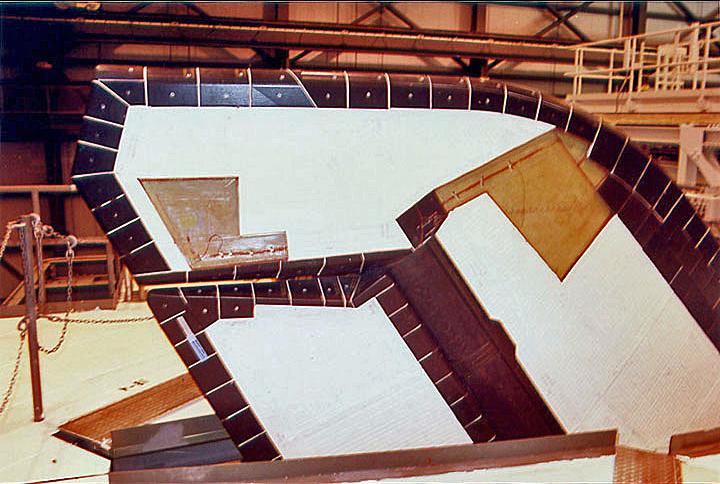 |
||||
The highest piece of Atlantis is the top of the vertical tail. When in the vicinity of the orbiter taking photographs, all equipment, and even my glasses, had to be tethered to my body so if anything fell, it would not contact the vehicle.
This series of photos of Atalntis were taken in 1991 as part of a special program to monitor tail flutter that had been undertaken by the company I worked for at the time, Endevco. It was feared the tail might experience this deadly phenomenon during reentry and could disintergrate.
Endevco provided a series of accelerometers mounted at various locations along the tail to monitor the possible flutter. The red cables seen in the photo at right are those attached to our equipment, which then sent signals to a control box mounted in the engine bay on the right inner wall of the compartment.
The data received during several orbital missions with our equipment showed the flutter was not severe, and our company helped to save a multi-million dollar retrofit which would have required replacement of all shuttle vertical tails. |
||||
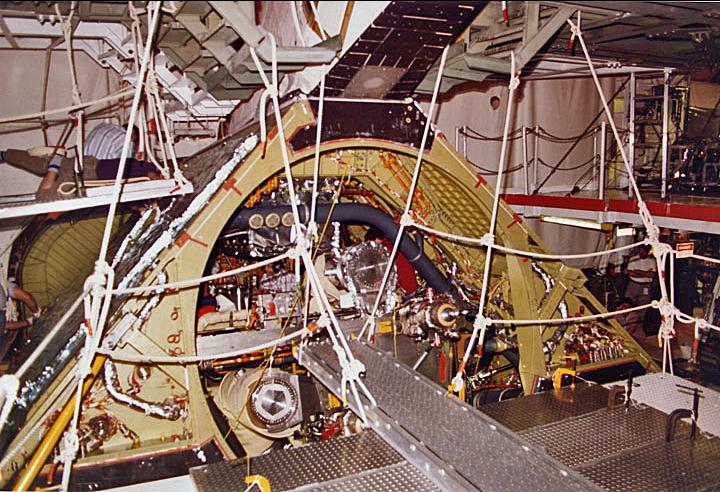 |
||||
The business end of Atlantis. This is the aft bulkhead of the orbiter. The three Space Shuttle Main Engines (SSMEs) have been removed for maintenance.
The top photo shows the slot for the upper engine. The rear of the vertical tail can be seen at top center. A scaffold is inserted into the slot to facilitate workers to enter the area. A decidedly low-tech system of ropes holds everything in place so the orbiter will not be damaged.
The photos below show the bottom two engine slots. A worker can be seen at the extreme right of the photo below right. |
||||
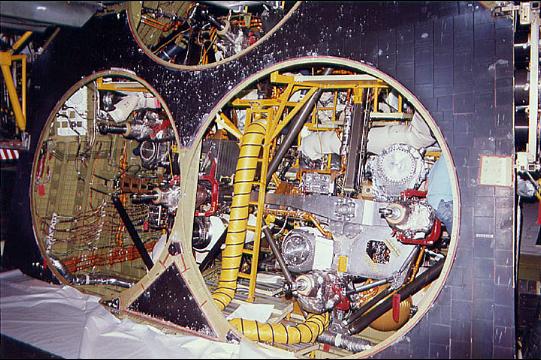 |
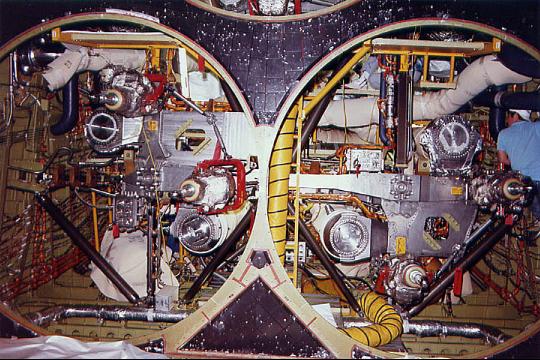 |
|||